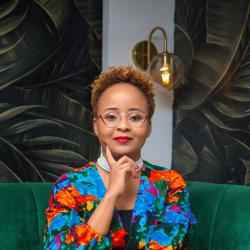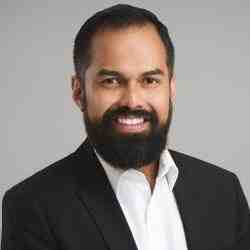Introduction
William Jackson is supporting Black children in succeeding in school by tapping and supporting the power of Black parents to reshape education by creating the racially affirming learning environments that Black children need to thrive.
The New Idea
The root causes of systemic oppression in the education system include the fallacies of racial inferiority and the idea that American society is wholly meritocratic rather than being shaped and influenced by racism and other toxic factors. To show how these notions have affected the education system and its ways of identifying and solving problems, Will uses the metaphor of fish in a lake. If you came to a lake and all the fish were sick or dead, would you blame the fish or the water they were swimming in? As long as we continue to believe in the fallacies of racism, interventions will continue to focus on fixing the “fish” (children of color) and not the “lake” (education system) that is making them sick. Currently, the American education system has no capacity to hold itself accountable to providing an equitable education to children of color. While well-intentioned interventions may target Black kids, their blackness – or race and racism – is almost never part of the conversation or intervention. But Will brings race front and center while positioning it as a powerful and positive starting point; indeed, his work asks the fundamental question, “What if the 7.5 million Black youth in American schools were exposed to the affirmation of their Black Genius?”
To realize the full potential of this big vision, Village of Wisdom leverages a group who has the resources, intrinsic motivation, and intellectual capacity to hold it accountable - Black parents. They are not asking students to become more resilient to a racist education system, instead they are working with students and their communities to create the tools and resources to support the education system in becoming non-racist.
With Village of Wisdom (or VOW), Will Jackson is working to reform the current education system by leveraging the power of relationships, technology, and data to reposition Black families to have more comprehensive power over the educational decisions of schools in order to create culturally affirming learning environments for black children. VOW is developing an ecosystem of tools, trainings, and assessments that guide stakeholders (e.g. students, parents, teachers, school leaders, policy makers, and funders) through structured processes to accomplish that goal. These tools address essential education decisions (EEDs) like discipline policies, materials available in the classroom, and lesson plans and curricula. EEDs are either made at the classroom level by teachers or made at the school or school system level. Guided by Black families, VOW is developing and validating equity assessment tools to ground EEDs and build educators’ skills to implement culturally affirming instruction.
These tools currently include a student survey on how culturally responsive the school climate is, a racial equity capacity assessment for schools, and the Black Genius Profile, a tool that helps parents codify their child’s cultural practices and intellectual strengths for teachers to incorporate into lessons. VOW is supporting tangible conversations about equity and EEDs using these tools in Durham and nationwide. They are training teachers and school leaders to shift mentalities about the root causes of the academic achievement gap, which encourages them to make EEDs that reflect a belief in the need to culturally affirm all students of color, especially Black students. They are working with Black families to build families’ knowledge of racial equity and culturally affirming tools, preparing them to be informed participants in EED conversations. They then work with all of these education stakeholders to create process that meaningfully include Black parents and drive education transformation. These processes will govern the creation, implementation and evaluation of policy reform, resource allocation, trainings, and accountability practices that support culturally affirming instruction.
The Problem
Ninety-three percent of Black children will report experiencing some form of racial discrimination while in school. Experiencing discrimination distracts a learner’s attention, an essential ingredient to learning, away from learning, in addition to causing myriad other social-emotional harms. Unfortunately, children experiencing racial discrimination in school are unlikely to receive racial or cultural affirmation to counteract the harm inflicted. Learning science backs up the assertion that failing to provide children of color access to culturally affirming learning environments is perhaps the most detrimental and consistent inequity impacting the intellectual development of Black youth. Against this backdrop of mindsets, policies and actions that drive the lack of culturally affirming instruction, Black children receive disproportionally higher rates of suspension and identification for special education. The mentality that persistently impedes our societal will to make the changes needed to create culturally affirming environments for children of color, especially Black children, is based on the idea that Black people are less than.
This disturbing, yet all-American idea, lays the foundation for the most popular understanding of the achievement gap: Black students and their families are to blame for their underperformance. Again, the lake metaphor is helpful here; the nature of most interventions designed to address the achievement gap have been developed to fix fish (i.e., students of color) and not the toxic lake (i.e., school system) that is making the fish sick. Perhaps the question we should all be asking is what type of love, creativity, and innovation is lost when the majority of the 7.8 million Black children in this country’s schools are exposed to learning environments that are toxic to them?
Unfortunately, culturally responsive instructional practices, some of the greatest potential lake cleansing solutions, have gone underfunded, under-assessed, and underused. Our education system was meticulously designed to privilege white men and has no concrete mechanisms for accountability to become more racially equitable. Despite the lack of tangible accountability levers, community-based organizers and advocacy organizations often build the leverage to engender policy changes. However, these organizers often do not have transparent or informed access to the decision-making processes that govern the implementation of the policy change they initially advocated for. For example, parent groups have been very successful at ending Zero-Tolerance suspension policies, but this has not translated into better academic outcomes for students at a systemic level. Often, when schools change their zero-tolerance policies, students of color who were being disproportionately suspended are now receiving a different type of disproportionately harsh discipline that leads to the same result, loss of instructional time and estrangement from the learning environment. Reforms that do not address the underlying issue that many teachers in our system view Black and Brown children as less than and therefore, disproportionately discipline them miss the mark. Without the inclusion of community in these implementation decisions, school leaders will likely choose ‘solutions’ that will lead to the same disproportionate outcomes communities were originally fighting against.
The American mentality of unconscious white supremacy combined with a lack of models for culturally affirming instruction and an education system not designed to include Black parents in decisions has led to the proliferation of interventions that focus on fixing Black youth and not the toxic learning environments depressing their performance. It is common to find programs designed to improve the academic performance of children of color by helping students change their behavior and therefore, avoid school suspensions. However, research shows that Black children are more likely to be suspended than white children even when displaying the same behavior. Therefore, interventions should focus on the education system and educators who are suspending Black students in disproportionate ways, rather than the children who are being suspended disproportionately. Shifting interventions to be more root cause oriented will take mentality shifts, increased skill, and system accountability.
The majority of Black children attend schools where children of color make up the majority of the student body, but even predominantly Black schools are spaces of white supremacy, where the structures, systems, laws, and leadership are baked into a wider discriminatory system. This system is powerful and has resisted change, but by marshalling the collective power of Black parents, Will has created a powerful opportunity to change that.
The Strategy
Will has developed an effective, highly scalable model to systematically encourage more racial affirmation of Black children across the country. Will’s life and work have convinced him that this single intervention can have the most widespread impact on our current education system. Racial affirmation means lifting up the unique cultural and social aspects of a person’s race as a positive. When more Black children are racially affirmed their engagement in school and performance across all standard measures of student success increase.
Right now, Village of Wisdom has three main tools for promoting a more equitable and accountable education system. Their flagship tool, the Black Genius Profile, is for parents to assess their children’s strengths and needs and bring them to their children’s teachers. Responsive teachers are often willing to incorporate learnings from this exercise into the child’s school day. They also have a culturally affirming climate survey for students that measures the quality of the school environment in terms of how it supports Black youth, and a school capacity survey that measures whether a school is equipped to implement and support racial equity measures effectively. VOW’s strategy for disseminating their tools to a wider audience is four-fold. First, they engage philanthropic supporters of parent and student organizers as a technical assistance provider to bolster community organizing efforts through their tools. Second, they are leveraging social media to create digital communities and campaigns to get parents across the country to utilize their tools, independently pressuring schools into becoming more equitable to students of color. Third, they are developing relationships with school district leaders, especially equity directors, to execute deep work with select districts that want help to structure EED processes that position Black parents with more meaningful control over the school environment. Fourth, they sell their first to market equity tools to school funders and district leaders as their purchasing power and scale represent financial opportunity as well as a way to reach large numbers of children, their parents, and their schools.
VOW currently works with parents and administrators in five schools in Durham, Charlotte, and Chicago. They have 950+ parents involved on Facebook groups dedicated to Black Genius. By reimbursing parents for their time and providing childcare, they are able to work with parents who would otherwise be shut out of activities like this because of simply not being able to afford to take time off from work or leave their younger children. They started with the Black Genius profile, but found when they brought it to schools, some teachers embraced it while others viewed it as a nuisance. This led them to develop methods for assessing school capacity to build a culturally affirming climate, as without meaningful school support, these types of initiatives often flounder. Parents who are trained as advocates by Village of Wisdom are taught not to just push for changes in policy, as in fewer suspensions, but for concrete measurements, as in suspension rates lowering by X amount, without increases in other punitive behaviors that separate children from the educational environment, with resources like money and time committed to making change happen, and with specific school and district officials held accountable for the changes.
In expanding their work, VOW is currently pursuing deals with school funders. Their plan with one large funder is to pilot their model in 5-8 additional schools. Once they have proved their model’s value to that funder, the funder has the capacity to push their work into as many as 50 schools. They are also pursuing contracts with school systems in Durham, Chapel Hill, and Atlanta. These districts encompass 150 schools and more than 100,000 students, including 52,000 black students. They are also raising philanthropic dollars with the goal of supporting community organizing groups from different communities, to determine how effective community organizing groups can be at reshaping the school environment and empowering black families when armed with these tools. In the spirit of trendsetting, VOW is strategically engaging education stakeholders including district school board members, district school leaders, charter school funders and lenders, and charter school leaders, with the goal of getting these influential leaders to reference and refer to VOW’s models, generating further demand.
In the next 5 years VOW is aiming to have their tools in 15 school districts and 500+ schools. They hope to be working with 25 parent organizing groups in 5 years and supporting them in using their online tools to become more integrated in key EED conversations within their respective school systems. Additionally, they will have done collaborative repositioning work with more than 10 school districts, creating systems where Black parents have concrete power related to EEDs. Reaching these milestones means that more than 500,000 students would have access to more culturally affirming learning environments.
Their 2019 budget is $502,000, with 20% earned revenue from the sale of their tools and technical support. They plan in the next few years to become financially self-sustaining and cover all their costs with earned revenue.
“School Spirit” in the US education system is well-researched and well-resourced. It’s been proven that engagement in and pride of school directly correlates with fewer absences, more social cohesion, and better test scores. Academic articles and profession in-services and boutique consulting firms help schools develop more “School Spirit” and, accordingly, Pep Fests and Pajama Days are a common feature in American schools. Will’s vision is as big: when he’s successful all school leaders across the country will understand that a school environment of cultural affirmation is the best investment in student success, and interventions that lift up and celebrate students’ unique cultures, competencies, and genius will be as common as Homecoming Games and Prom.
The Person
Will grew up in the Atlanta Metro area of Georgia, which is a unique environment for Black youth in that, as a place with many neighborhoods of middle-to-upper-middle-class Black families living together, there was an abundance of models of Black people achieving financial success in a wide variety of fields. His parents also contributed significantly to the number of positive racial affirmations he received, by regularly reminding him of the great contributions of Black scientists. As a child, he planned to become a scientist himself. His environment largely sheltered him from the negative messages and stereotype threat that impact so many Black children and when negative messages did come his way, they had nowhere to take hold inside of him, because his parents and his environment had provided him with so many positive racial affirmations. This was the genesis of a lot of his work with VOW.
In college, he restarted his university’s chapter of the National Organization of Black Chemists and Chemical Engineers. But after graduating with a chemistry degree, he decided to forgo a PhD and instead became a middle school teacher, to reach young students of color who might never make it to him if he took a position as a professor. After teaching for four years, he became frustrated, realizing that despite his students’ high-test scores, they were not ready to navigate the world outside of his classroom. In search of a solution, he left teaching to learn more about how Black students could be better equipped to navigate a racially biased system. In graduate school, he learned all about the cognitive processes behind learning, but found the research seldom discussed how these were impacted by socio-cultural realities. Searching for interventions that help students to cope and navigate racial bias explicitly, he found evidence that demonstrated that the more racially affirmed Black children were, the more resilient they were to the negative effects of racial bias. Armed with this knowledge, he founded VOW to answer the question “why aren’t we systematically working to racially affirm Black children more and how do we encourage more racial affirmation of Black children across the country?”

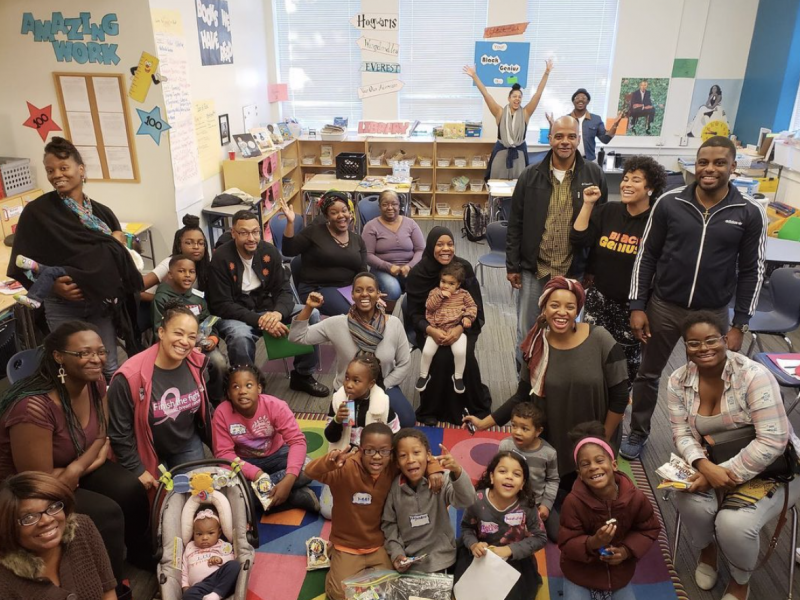 Tile image
Tile image Tile image
Tile image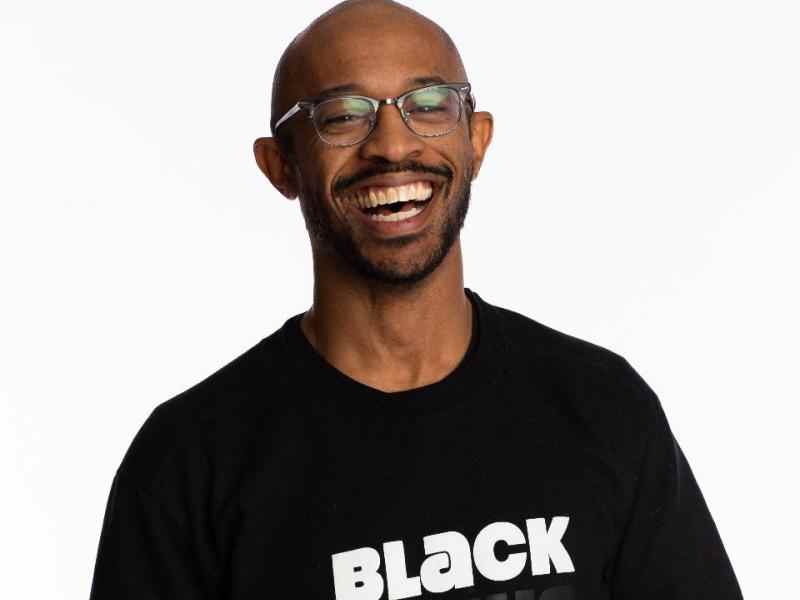 Tile image
Tile image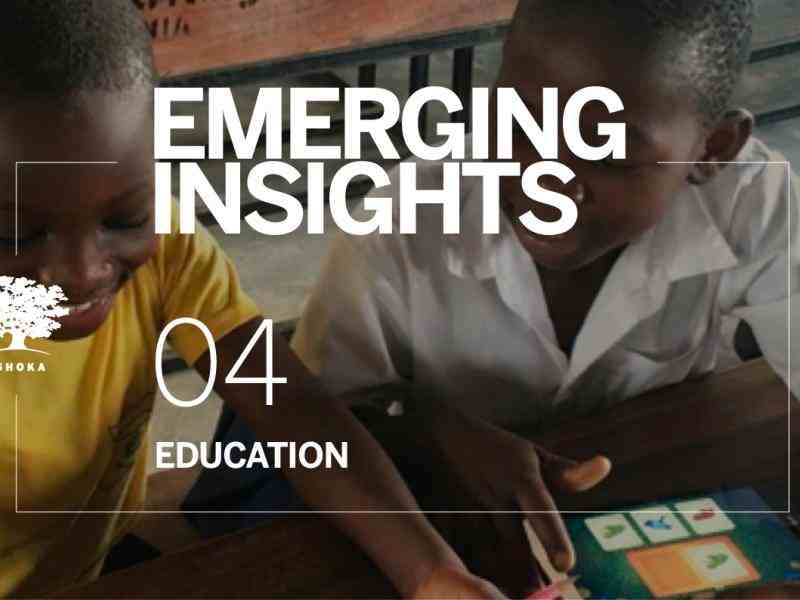 Tile image
Tile image
